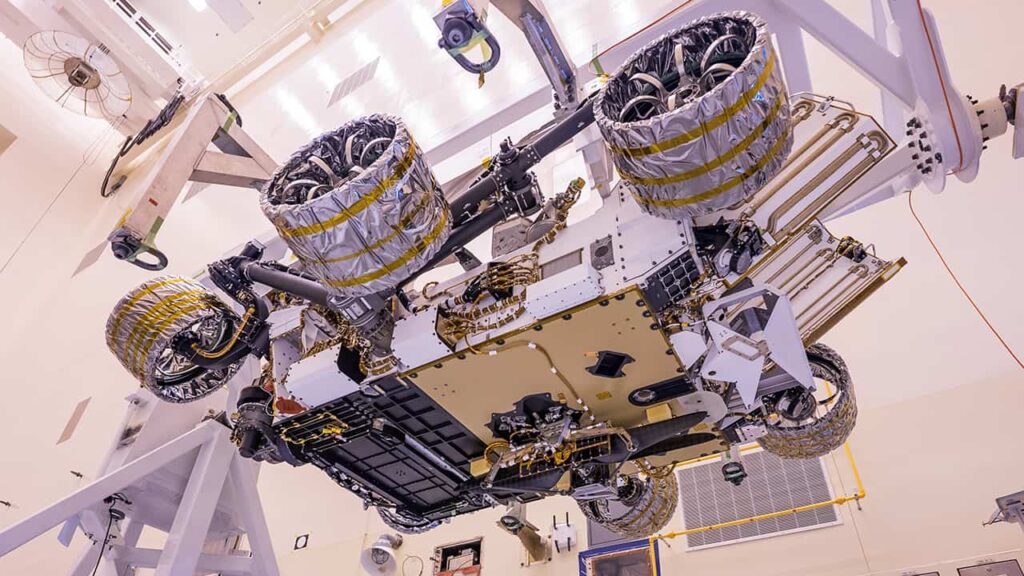
As part of the final preparations leading up to the launch of the Mars 2020 Perseverance rover, NASA has completed the attachment of the unmanned Mars Helicopter, which will be the first aircraft in history to attempt power-controlled flight on another planet.
The helicopter, which weighs 4 pounds (1.8 kilograms) with propellers 4 feet (1.2 meters) in diameter, is encapsulated within a delivery system, which was attached to the rover after the successful confirmation that data and commands could be sent and received. The helicopter will be deployed roughly two-and-a-half months after Perseverance’s landing on the surface of Mars, executing a flight-test campaign of up to 30 days during which it will generate its own electrical power through a solar panel located above its twin counter-rotating propellers.
The Perseverance rover is a robotic science platform weighing 2,260 pounds (1,025 kilograms), designed to search Mars for signs of past microbial life, characterize the planet’s climate and geology, collect samples for future return to Earth and pave the way for human exploration. It is scheduled to land on Mars’ Jezero Crater on Feb. 18, 2021.
In addition to the integration of the unmanned helicopter, NASA has also completed the fueling of the mission’s descent stage, loading 884 pounds (401 kilograms) of hydrazine monopropellant into the four fuel tanks. As the aeroshell containing the descent stage and rover enter the Martian atmosphere, this propellant will be pressure-fed through into eight Mars landing engines, which will slow the spacecraft from about 180 mph (80 meters per second) at 7200 feet (2,200 meters) above the surface to 1.7 mph (0.75 meters per second) at 66 feet (20 meters).
Maintaining this rate of descent, the stage will then spool out nylon cords to lower the rover 25 feet (7.6 meters) below the descent stage. When the spacecraft senses touchdown at Jezero Crater, the connecting cords will be severed and the descent stage will fly off.
David Gruel, the Mars 2020 assembly, test and launch operations manager at NASA’s Jet Propulsion Laboratory, commented: “The last hundred days before any Mars launch is chock-full of significant milestones. Fueling the descent stage is a big step. While we will continue to test and evaluate its performance as we move forward with launch preparations, it is now ready to fulfill its mission of placing Perseverance on the surface on Mars.”


















